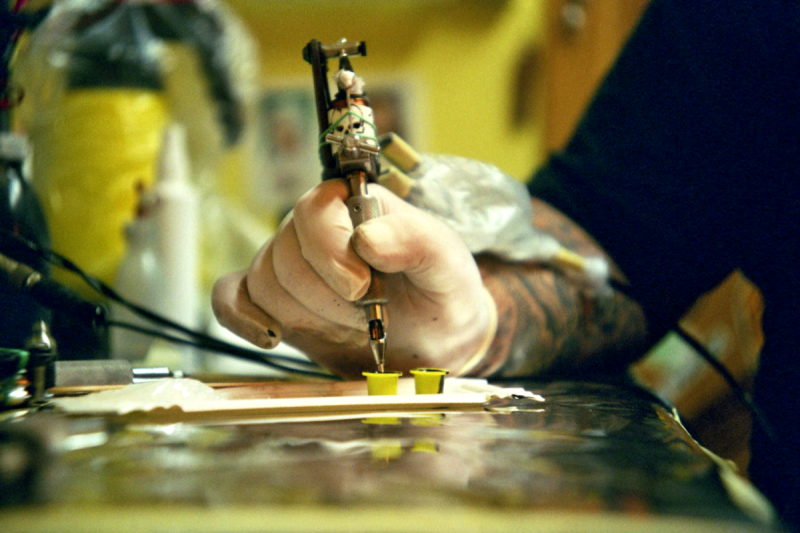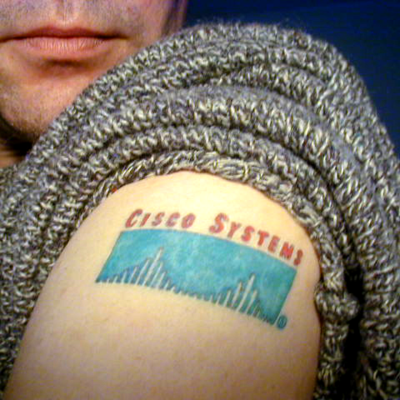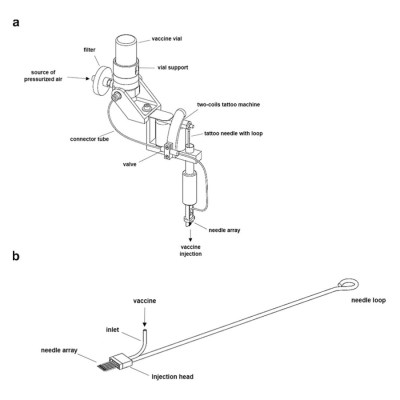
Tattoos are an interesting technology. They’re a way of marking patterns and designs on the skin that can last for years or decades. All this, despite the fact that our skin sloughs off on a regular basis!
As it turns out, tattoos actually have a deep and complex interaction with our immune system, which hold some of the secrets regarding their longevity. New research has unveiled more insight into how the body responds when we get inked up.
Not Going Anywhere
As we all know, if you draw something on your skin with a pen, paint, or marker, it will eventually come off in a few days or so. Tattoos, on the other hand, are far more longer lasting. The basic theory of tattooing is simple. Rather than putting ink on the epidermis (the upper layer of skin), it is instead inserted into the underlying upper dermis. There, the ink is free from the day-to-day sloughing off of skin. A properly-performed tattoo can last a lifetime, and beyond, in the case of the oldest identified tattooed individual from 3250 BC.
Normally, when foreign particles are introduced into the body, the immune system responds to destroy them. In the case of tattoos, though, the story is more interesting. As it turns out, our immune system does respond immediately when a tattoo is first inked. Cells swarm the damaged area of epidermis and dermis to try and deal with the invader. However, when these cells, called macrophages, interact with tattoo pigments, there’s a problem. The pigment particles cannot readily be broken down by the enzymes carried by the macrophage. Instead, the pigments remain stuck inside the macrophage until it eventually dies off and falls apart after a few days or weeks. Then, the pigment particle is ingested by another macrophage and the process begins again. Conveniently, just like skin, macrophages aren’t very opaque. This means we can still see the tattoo pigments even as they’re being swallowed and released over and over again.

Thankfully, macrophages don’t move around much at all, meaning that tattoos tend to stay where we put them. However, this process of death and reingestion is thought to be behind why tattoos tend to get a little fuzzy around the edges over time.
It’s also an important factor around how tattoo removal works. Laser tattoo removal treatments break down pigment particles into smaller pieces which can more readily be disposed of by macrophages. This process is why tattoo removal isn’t instant. Instead, the pigment particles are broken down into fragments, and macrophages in the skin then take a few weeks to remove the debris. This process is called phagocytosis, with the debris eventually making its way out of the dermis via the lymphatic system.
Some scientists are investigating whether temporarily inhibiting macrophage function could speed up tattoo removal. Normally, the lasers kill macrophages holding pigment particles, only for the pigment to be gobbled up by another macrophage shortly after. Instead, if the pigment was instead left exposed, it could be more easily broken down by the laser into smaller particles, ready to drain away via the lymphatic system.
Other research is ongoing as to the broader effects of tattoos on the immune system. Some studies have found that heavily-inked individuals actually have more antibodies circulating in the blood than those without tattoos. It’s led some to theorize that a tattoo could have a “priming” effect, acting as a long-term, low-level workout for the immune system. However, the immune system is complicated, and having more antibodies is not necessarily the same as having a more capable immune system. Research is ongoing as to what role tattoos could play in this area.
Perhaps most compelling, though, is that tattoo techniques could prove useful for interacting with our immune system more directly. Presently, most vaccines are injected deep into the muscle. Since these areas are not exposed to the outside world, the human body has very few immune cells in these areas. Thus, it can take time for the body to build an immune response to vaccines delivered via the intramuscular route. In comparison, the skin is full of immune cells as one of our first lines of defence.

Providing vaccines with intradermal injections is possible, but current medical techniques in this area have some drawbacks. The techniques require significant training, and getting the injection wrong can spoil the effectiveness of the vaccine. However, tattoo techniques are all about reliably delivering material into the skin. Inspired by those techniques, researchers created their own tattoo-gun-like vaccine delivery system capable of making 100 microinjections in the skin per second. Early results have been good, using DNA vaccines for their ease of production. The hope is that a device can be developed to reliably deliver controlled vaccine doses intradermally, to generate a strong immune response quickly and efficiently.
Overall, as researchers learn more about tattoos, they’re learning more about the immune system and the human body as well. This knowledge may yet serve humanity well as we seek to tackle issues like autoimmune diseases and fight against difficult viruses and the threat of superbugs. In the meantime, next time you’re on the bench getting inked and you’re short on small talk, you can always have a great chat about macrophages with your friendly local tattoo artist.
Banner image: “Gogo Tattoo Machine” by Franki2001
How Tattoos Interact With The Immune System Could Have Impacts for Vaccines
Source: Manila Flash Report
0 Comments